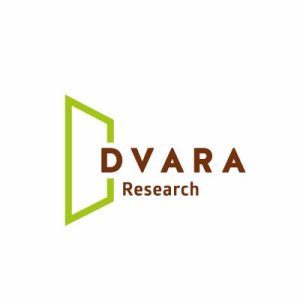In this blog post we feature a conversation between Bama Balakrishnan, CRO, IFMR Capital and Kalpana Pandey, CEO & Managing Director, CRIF High Mark. CRIF High Mark is one of the four credit bureaus that operates in the country.
What are your thoughts on the evolution of Credit Information Companies in India and your experience in this space?

India had one Credit Information Company (CIC) from 2004 till 2010. CIC(R)A 2005, the regulation for CICs, came into existence in 2006-07. Pursuant to that, CRIF High Mark (then High Mark) along with two other companies got license to operate as CIC in 2010.
CRIF High Mark was founded with a vision to create a comprehensive and all inclusive credit bureau. The Andhra Pradesh microfinance crisis of 2010 underscored the need for a bureau coverage for the sector, so we took the opportunity to partner with various participants of the microfinance industry and launched India’s first Credit Bureau for Microfinance lending in March 2011. We now operate World’s largest Microfinance Database and over past 5 years, we have supported this sector with reliable information on over 10 crore credit decisions.
CRIF High Mark now is a full-service credit bureau providing coverage for all borrower segments – group lending, individual lending and MSME/Commercial lending. We now work with not only MFIs but also Banks, NBFCs, Housing Finance Companies, RRBs, Coop Banks etc.
RBI since the last year onwards requires all financial institutions to report to all credit bureaus. This means CIBIL must be getting microfinance data, High Mark must be getting data from banks, HFCs, etc. Have you seen good progress in this process?
In addition to Microfinance data, as mentioned earlier, CRIF High Mark was receiving data from major Banks, NBFCs, HFCs, Coop Banks, and RRBs on retail, agri, rural, MSME and corporate lending even prior to 2015. We were missing data from a few players. Since the RBI Jan’2015 notification, these missing gaps have been filled up for us. Similarly, CIBIL must be getting microfinance data.
All systemically important institutions are now compliant with this regulation, and sharing data with all credit bureaus. The smaller cooperative banks and NBFCs are gradually signing up as members with CICs. Data sharing will be the next step for such smaller institutions. Each bureau deploys a filter criteria while uploading data from the files shared by Member institutions into its database. Our technology helps us differentiate ourselves in absorbing the maximum data out of those files and making sense from weaker data.

Our understanding is that compliance in this regard is still catching up – institutions are going through the process of registering with all the bureaus and would in due course commence sharing data regularly.
The other part which I wanted to understand is, what is your sense of the readiness of credit bureaus in being able to process this kind of information – such as the JLG data – which is different from traditional retail lending?
Where do you think the gaps might be even as institutions start reporting – do you think more needs to be done in terms of capacity building, technology, infrastructure by the bureaus to make sure that they can actually use this information and irrespective of which bureau the lending institution is pulling the report from, they would still get the full picture of indebtedness?
All large players are members of all credit bureaus and have shared data with all CICs. The smaller players while are registering with the bureaus, however these players do not have the IT wherewithawal and have higher dependence on their IT vendors – they have challenges with sharing of data, they will share data once their vendors are able to help them. Our Data Ops team hand-holds such smaller institutions through this process supporting them with mapping of data, file structure and best practices.
As regards data sharing, RBI has standardized the data sharing formats, and all institutions are expected to share data in these formats. CRIF High Mark’s data format was chosen as the format for group lending. Minor additions have been made to this format to cover reporting of SHG data. All these changes are now made in consultation with a Technical Working Group formed by RBI for this purpose.
One has to realise that the input data is becoming similar for the CICs, but each bureau brings its own differentiator through its underlying technology and products. Now CICs give Credit Score in the same range (300-900) to make it easier for people to understand.
In addition all of us expect an overlap between SHG and JLG — we found 40-45% overlap between the JLG and SHG customers on tests we did on data from a few banks. Banks, NBFCs and MFIs are entering into each other territories. So as a user, one should be able to get comprehensive view of customer in a single report. Though the group lending format is different from retail lending format, we are able to process these independently but bring them together to give one picture of the customer. We already have products to provide such full picture of Indebtedness of a customer across SHG data, JLG Data and Individual lending.
We have seen some KYC issues with microfinance customers where we see customers using multiple KYCs with different institutions. We know that bureaus may use relationship information to triangulate data but this may be approximate. With UID coming in and MFIN’s push to ensure authentication through UID, do you see the situation improving in terms of better triangulation of the identity of a customer?
When we launched our bureau for the microfinance segment, objective identifiers such as Voters ID etc were not consistently captured. Even names and addresses were not captured completely. Our technology worked on whatever was available (including relationship names) to bring out most relevant results.
Over the past five years, data quality has crossed many levels – IT systems are better, processes have improved, field staff is sensitized — objective KYC IDs come in now but are largely limited to Voters ID, Aadhaar and Ration Card. MFIN’s push to seed Aadhaar in every new loan being disbursed is seeing fantastic results.
Fragmentation of customer’s data across multiple KYC ID is not unique to Microfinance sector. It is observed in Retail lending space as well since PAN, Passport and Driving License ID are valid KYC IDs. Our bureau systems are tuned to handle these situations to provide comprehensive and also accurate credit reports.
The technology is not biased towards only objective KYC ID, it makes sense of data available across all fields – even single names, partial Voter ID, partial addresses etc – to bring best possible matches. Having said that, it doesn’t mean we would not use KYC ID – better KYC regime will certainly help. Today, we provide millions of credit reports every month with very minimal errors. We constantly invest in fine-tuning our technology, learning from the newer data that we see and the reported errors. With much better availability of a consistent KYC ID (such as Aadhaar) will minimize these errors.
One question on the recent trends of people trying to build platforms for lending using traditional and non-traditional data and algormithic underwriting. Do you think the Indian market is ready for these business models and secondly, do you see this transforming the microfinance lending business? We know that there is not much data, but do you think there is a possibility that with credit bureau data building up and more of it becoming available, people could think about such a business model where there is not much data available other than payment track record. Is that a possibility you have seen people starting to explore?
Our country has just seen use of traditional data (formal lending data). There is defintely an opportunity in exploring use of non-traditional data such as telephone or mobile data, utility bill payments. Many countries have seen benefits of expanding the coverage of population within the bureau with use of such non-traditional data. There have been studies highlighting linkages of such non-traditional data especially payment data with individual’s credit behaviour.
There was an RBI Committee to evaluate the possibility of getting utility data and telecom data into Credit Bureaus. The committee concluded that Telephone use data is meaningful, would help in the cause of inclusion and it should be brought into the credit bureau system. Some legal and regulatory amendments are required to enable telecom service providers to share data with CICs.
Many FinTech start-ups are bringing in novel ideas around providing alternate means of scoring customers and also on algorithmic lending. The success of these models are to be seen, but such new ideas is certainly driving more innovation in the lending related technologies. Most of these businesses are digital in nature, so they may not really be targeting the same customers as that of Microfinance institutions.
We are closely following these developments. RBI is also keenly watching the space, and has already taken initial steps in understanding the various models.
Looking forward, in the backdrop of small finance banks and payments banks that are about to enter the system and the increasing thrust towards financial access driven by various initiatives both by the regulator and the government, as a credit bureau, how do you see the road ahead and some of the key challenges that bureaus in general have to contend with going forward?
Small Finance Banks are none other than existing Microfinance players who will now be diversifying as Banks. They are not new to Credit Bureau environment, but will now expand beyond Microfinance lending and also beyond lending. They will now require Credit scores for Individuals as well as for MSMEs.
For Microfinance sector, the code of conduct guidelines may require a revisit. It currently applies only to NBFC-MFIs, but since Banks and other players are also competing in the same space, we suggest to make these guidelines applicable to all players into direct JLG lending. This is assuming more importance given many MFIs will be SFBs over next few months.
Payments Banks are not into lending so right now they cannot work with a credit bureau. But the payment data generated by Payments Banks is also a strong source of alternate data. Payment data from Payments Banks can expand information coverage across very large expanse of population, and could certainly supplement credit underwriting.
Credit Bureaus will have to constantly evolve to keep up with these changes, and to remain relevant. Newer businesses will have newer needs. Alternative data will require to be merged with the traditional data to make better sense for the customer. The road ahead seems very exciting.


